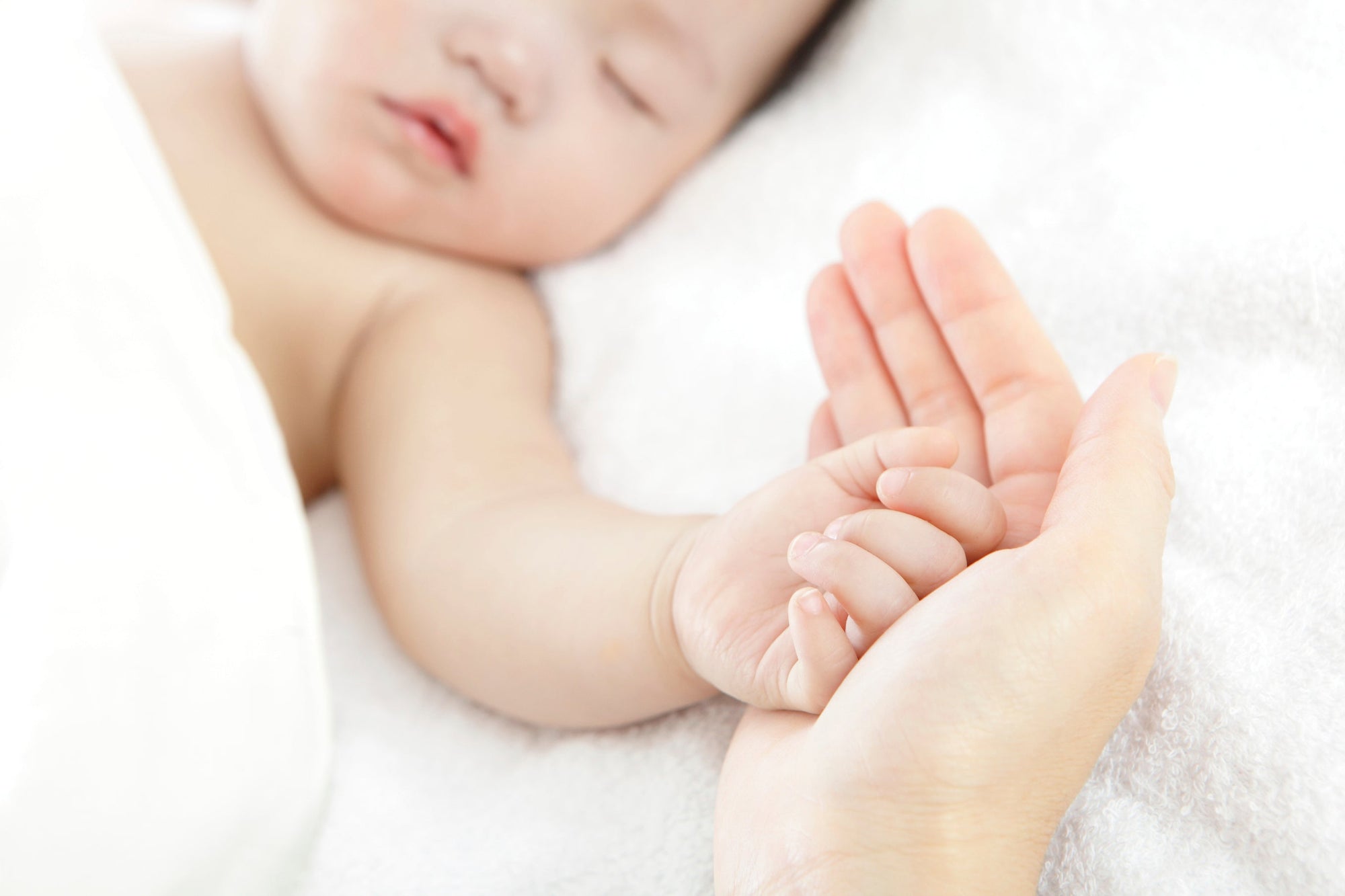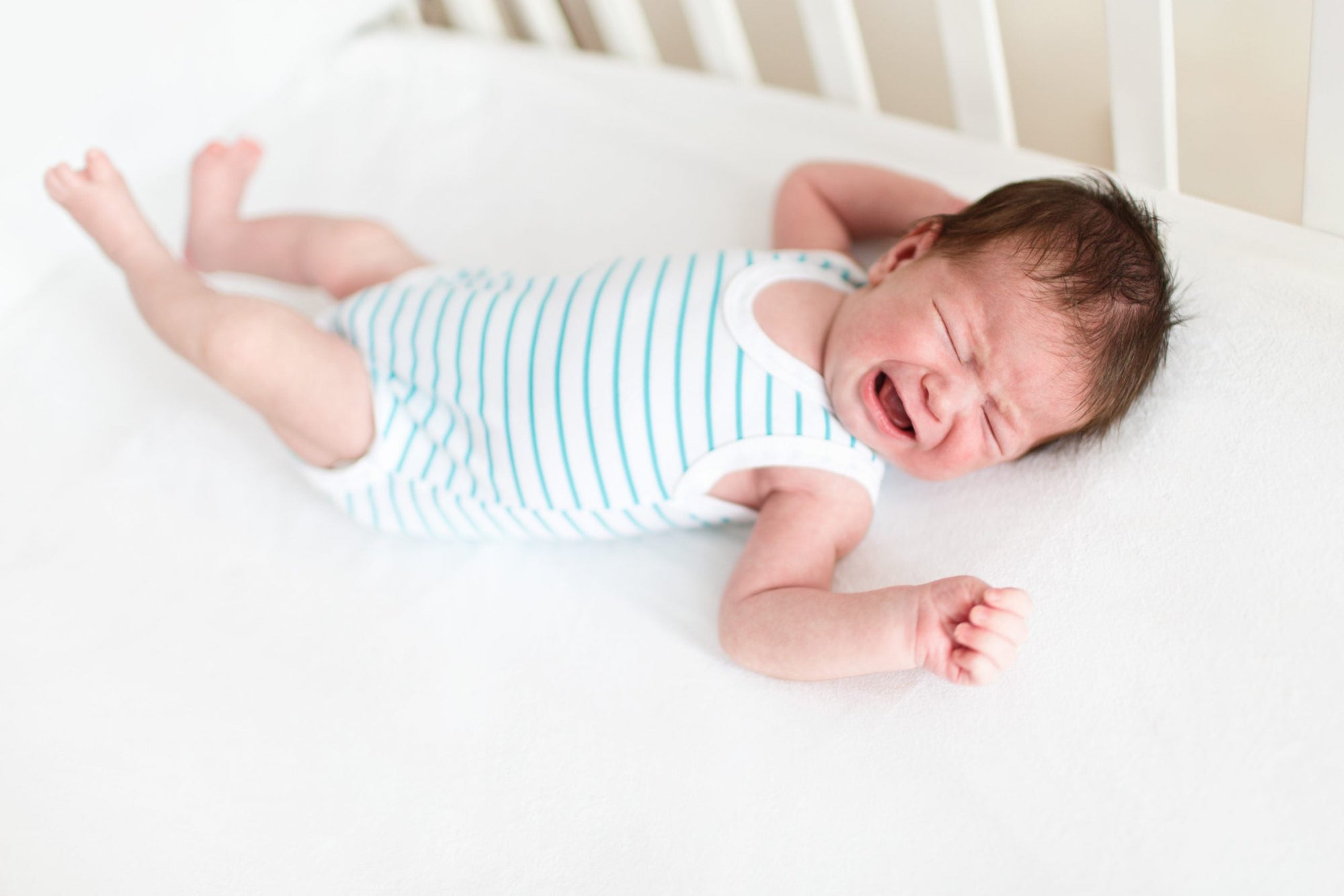Having a baby comes with a whole new language. Suddenly you’re throwing around words like binky and cradle cap, not to mention your voice somehow jumps several octaves when speaking to anyone under the age of 5.
Sleep comes with its own language too. One phrase you might hear tossed around a lot? Sleep associations. So what exactly are they and what do you need to know about ‘em? We talked to sleep consultant Traci Gleeson of Dream Team Baby (the gurus behind the book The Dream Sleeper: A Three-Part Plan for Getting Your Baby to Love Sleep) to get the scoop on sleep associations.
What are Sleep Associations?
A sleep association is basically any action that helps your baby fall asleep. Children of all ages, and even adults, have sleep associations whether they’re aware of them or not.
“When I go to the bathroom in the middle of the night and come back to bed, I put a cool pillow over my head and that helps me go back to sleep – that’s a sleep association,” Traci says. “Babies are no different. They have sleep associations and we break them into negative or positive.”
So what makes a sleep association negative or positive? It depends on who’s carrying out the action that helps your baby fall asleep. “Negative sleep associations require somebody to do something for the baby, like rocking or feeding them until they fall asleep,” Traci says. “Positive sleep associations are things that babies can do to fall asleep that don’t require anybody else.”
A negative sleep association might seem pretty harmless. What could be so bad about rocking a baby to sleep – isn’t it the subject of just about every lullaby out there? But the issue isn’t necessarily the rocking. It’s that somebody else is doing the work of falling asleep for your baby.
“They’re not negative because they don’t work,” Traci says. “They’re negative because the baby associates that parent’s particular action with going to sleep. Then they wake up in the middle of the night and can’t figure out how to get back to sleep without it.”
Hence those 2 a.m. wake-up calls and crying sessions that can affect the whole family’s quality of sleep.
So what’s a Negative Sleep Association, and What’s a Positive One?
Allow us to break it down. Negative sleep associations typically involve a parent or caregiver doing one or more of the following during daytime and/or nighttime sleep:
- Nursing or bottle feeding the baby to sleep
- Rocking the baby to sleep
- Sleeping alongside the baby’s crib (or even inside of it!)
- Holding the baby’s hand until they fall asleep
- Bouncing the baby to sleep
- Driving the baby around in the car so they fall asleep
- Soothing the baby to sleep by pushing them in the stroller
- Lulling the baby to sleep by putting them on top of the washing machine
Positive sleep associations typically involve the baby doing one or more of the following on their own:
- Biting, rubbing or holding a lovey
- Humming
- Singing
- Sucking on their thumb or fingers
- Banging their feet against the crib mattress
- Rocking back and forth
- Lifting up their legs into the fetal position
There are also “external sleep associations,” aka things that set the scene for sleep. These are positive cues that let baby know it’s time to sleep. Traci recommends the following:
- Blackout shades
- White noise
- Room temperature set between 68 to 72 degrees
- Use of a lovey, which helps babies comfort or self-soothe themselves to sleep
You can read more about how to introduce a lovey into your child’s sleep routine here.
A note about pacifiers: According to Traci, pacifiers fall somewhere in the middle of negative and positive sleep associations. On the one hand, a pacifier can be positive in the same way that a lovey allows your baby to self-soothe themselves back to sleep if they wake up in the middle of the night. On the other hand, if the baby comes to rely on a parent coming into the nursery to reinsert the binky every night, that could become a negative sleep association.
When Should You Address a Negative Sleep Association?
It’s never too late to address a negative sleep association. But the ideal age for dealing with it is around 4 to 6 months, or after your baby is able to sleep through the night without waking to feed.
“Don’t worry about sleep associations for the first 0 to 3 months – if you want to rock or nurse your baby to sleep, rock or nurse them to sleep,” Traci says. “By the time your baby hits 4 months, though, they’re capable of independent sleeping. That’s when you want to tackle any negative sleep associations – or make sure you don’t start any!”
Around 4 months is also a sweet spot because babies are still quite young and the negative sleep association won’t be as memorable or hard to break. “The older the baby gets, they more they might protest because they realize a change is happening,” Traci says.
How Do You Actually Break a Negative Sleep Association?
Sleep training can be a very effective way to break a negative sleep association. And, if you prepare well ahead of time, it may take only a few days to break.
There are many healthy sleep habits you can focus on and training methods to choose from. What you pick depends on your baby, your family and your pediatrician’s recommendations. You can try, for example, putting your baby in the crib drowsy, but awake, that way they learn how to fall asleep on their own in the crib. Traci also recommends an outside-the-nursery bedtime routine that can include feeding, rocking and cuddling, all while the baby is awake. That way when the baby is moved to their crib for sleep, they don’t “associate falling asleep with sitting with Mommy in the rocker.”
Once infants say bye-bye to negative sleep associations, they’ll naturally develop their own positive sleep associations, Traci says. She recalls a set of 19-month-old twins who, in separate rooms, somehow came up with the same unique positive sleep association – rocking back and forth on all fours.
“The goal of training is to have your baby learn their own positive sleep associations so they can learn how to self-soothe,” Traci says. “Then if the baby wakes up in the middle of the night, they can do their sleep association – whatever it is – and the parents don’t have to be involved.”
If you do choose to sleep train, consistency is key, Traci says. As is the belief that your baby will be able to master sleeping through the night independently.
“Babies have the power within them to fall asleep and go back to sleep by themselves, they just may not know it yet,” says Traci. “There’s a positive sleep association for each baby – it’s intuitive. And parents can help unlock it.”
Key Takeaways
- Sleep associations are actions aiding a baby's sleep, split into negative and positive categories.
- Negative sleep associations like rocking or feeding a baby to sleep can create dependency, disrupting your family's sleep.
- Try removing negative sleep associations around 4 to 6 months through sleep training to foster independent sleep and allow babies to form their own positive self-soothing routines.



















